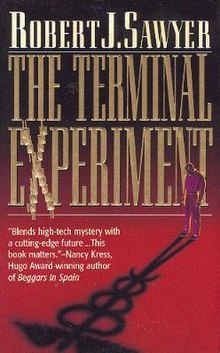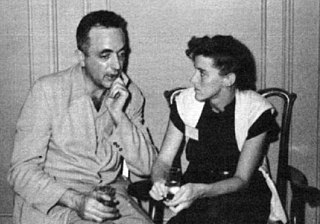
Katherine Anne MacLean was an American science fiction author best known for her short fiction of the 1950s which examined the impact of technological advances on individuals and society.

Gene Rodman Wolfe was an American science fiction and fantasy writer. He was noted for his dense, allusive prose as well as the strong influence of his Catholic faith. He was a prolific short story writer and novelist, and won many literary awards. Wolfe has been called "the Melville of science fiction", and was honored as a Grand Master by the Science Fiction and Fantasy Writers of America.

Joe William Haldeman is an American science fiction author. He is best known for his novel The Forever War (1974). That novel and other works, including The Hemingway Hoax (1991) and Forever Peace (1997), have won science fiction awards, including the Hugo Award and Nebula Award. He was awarded the SFWA Grand Master for career achievements. In 2012 he was inducted as a member of the Science Fiction Hall of Fame. Many of Haldeman's works, including his debut novel War Year and his second novel The Forever War, were inspired by his experiences in the Vietnam War. Wounded in combat, he struggled to adjust to civilian life after returning home. From 1983 to 2014, he was a professor teaching writing at the Massachusetts Institute of Technology (MIT).
Faye Marder Kellerman is an American writer of mystery novels, in particular the "Peter Decker/Rina Lazarus" series, as well as three nonseries books, The Quality of Mercy, Moon Music, and Straight into Darkness.

Robert James Sawyer is a Canadian science fiction writer. He has had 24 novels published and his short fiction has appeared in Analog Science Fiction and Fact, Amazing Stories, On Spec, Nature, and numerous anthologies. He has won many writing awards, including the best-novel Nebula Award (1995), the best-novel Hugo Award (2003), the John W. Campbell Memorial Award (2006), the Robert A. Heinlein Award (2017), and more Aurora Awards than anyone else in history.

Christopher Priest is a British novelist and science fiction writer. His works include Fugue for a Darkening Island, The Inverted World, The Affirmation, The Glamour, The Prestige, and The Separation.
Bradley Clayton Denton is an American science fiction author. He has also written other types of fiction, such as the black comedy of his novel Blackburn, about a sympathetic serial killer.
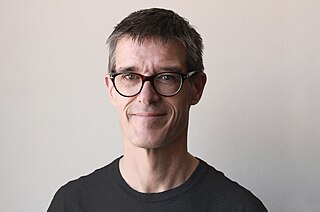
Sean Stewart is an American-Canadian science fiction and fantasy author.

Edward Winslow Bryant Jr. was an American science fiction and horror writer sometimes associated with the Dangerous Visions series of anthologies that bolstered The New Wave. At the time of his death, he resided in North Denver.

Graham William Joyce was a British writer of speculative fiction and the recipient of numerous awards, including the O. Henry Award and the World Fantasy Award, for both his novels and short stories.
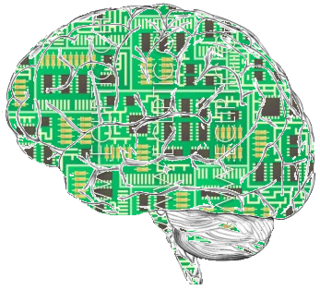
Mind uploading, whole brain emulation, or substrate-independent minds, is a use of a computer or another substrate as an emulated human brain. The term "mind transfer" also refers to a hypothetical transfer of a mind from one biological brain to another. Uploaded minds and societies of minds, often in simulated realities, are recurring themes in science-fiction novels and films since the 1950s.

The Calcutta Chromosome is a 1995 English-language novel by Indian author Amitav Ghosh. The book, set in Calcutta and New York City at some unspecified time in the future, is a medical thriller that dramatizes the adventures of people who are brought together by a mysterious turn of events. The book is loosely based on the life and times of Sir Ronald Ross, the Nobel Prize–winning scientist who achieved a breakthrough in malaria research in 1898. The novel was the recipient of the Arthur C. Clarke Award in 1997.

Phyllis Eisenstein was an American author of science fiction and fantasy short stories as well as novels. Her work was nominated for both the Hugo Award and Nebula Award.

The Sea Wolf is a 1941 American adventure drama film adaptation of Jack London's 1904 novel The Sea-Wolf with Edward G. Robinson, Ida Lupino, John Garfield, and Alexander Knox. The film was written by Robert Rossen and directed by Michael Curtiz.

The Moon and the Sun is a novel by American writer Vonda N. McIntyre, published in 1997. The book combines two major genres: science fiction and historical romance. It won the Nebula Award for Best Novel in 1997, beating out A Game of Thrones by George R. R. Martin. The novel was inspired by the short story "The Natural History and Extinction of the People of the Sea", also by McIntyre, which was illustrated by fellow author Ursula K. Le Guin.
A Hobson's choice is one that must be taken or left.

Flashforward is a science fiction novel by Canadian author Robert J. Sawyer first published in 1999. The novel is set in 2009. At CERN, the Large Hadron Collider accelerator is performing a run to search for the Higgs boson. The experiment has a unique side effect; the entire human race loses their consciousness for about two minutes. During that time, nearly everyone sees themselves roughly twenty-one years and six months in the future. Each individual experiences the future through the senses of his or her future self. This "flashforward" results in countless deaths and accidents involving vehicles, aircraft, and any other device needing human control at the time of the experiment. The novel is adapted into the 2009 television series FlashForward.

Immortality is a common theme in fiction. The concept has been depicted since the Epic of Gilgamesh, the oldest known work of fiction. Originally appearing in the domain of mythology, it has later become a recurring element in the genres of horror, science fiction, and fantasy. For most of literary history, the dominant perspective has been that the desire for immortality is misguided, albeit strong; among the posited drawbacks are ennui, loneliness, and social stagnation. This view was challenged in the 20th century by writers such as George Bernard Shaw and Roger Zelazny. Immortality is commonly obtained either from supernatural entities or objects such as the Fountain of Youth or through biological or technological means such as brain transplants.

Ashling is the third book in the Obernewtyn series by Isobelle Carmody.
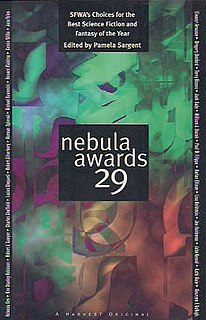
Nebula Awards 29 is an anthology of award-winning science fiction short works edited by Pamela Sargent, the first of three successive volumes under her editorship. It was first published in hardcover and trade paperback by Harcourt Brace in April 1995.
